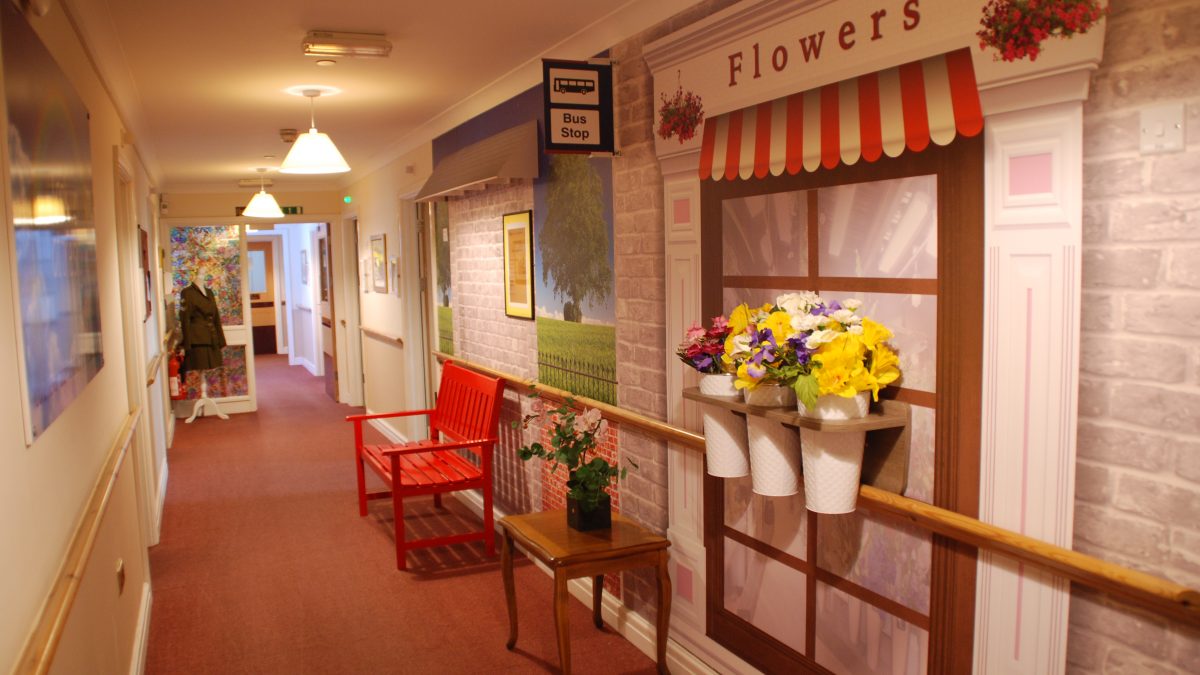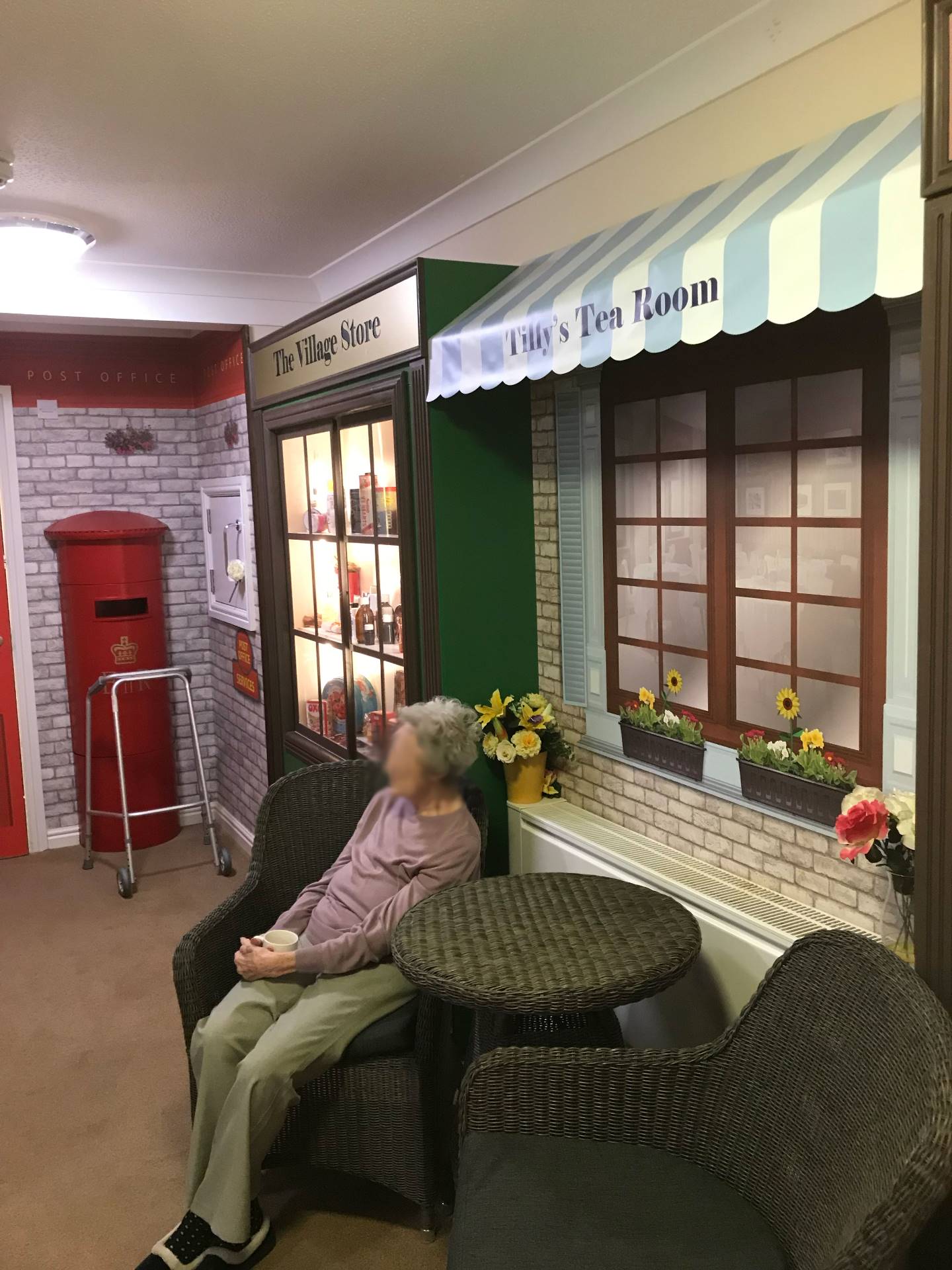Creating A Calming Environment For People With Dementia
1-minute read
A soothing, calming atmosphere is helpful for everybody. For a person with dementia, it can help minimise their confusion and help them to concentrate and rest.
To create a soothing, calm environment, look at the household routine, the noise levels, the lighting, the effects of mirrors, the state of the bedroom, and even the colours and patterns used through the house.
Many people with dementia find noise annoying, so you might need to turn the television and radio off more often. You can try to eliminate shadows, glare and reflections that a person with dementia may find frightening.
Pets are a very important source of comfort and companionship for many people with dementia.
Use Furniture To Create A Friendly Environment
Furniture is essential to creating the right environment for your residents. When selecting your furniture, you may want to consider items that have been specifically designed to help people with dementia feel more relaxed and at home.
For instance, bedroom cabinet furniture with scoop handles and without a door enables residents to easily see whats inside without having to rummage through their items.;
Avoid having too many mirrors around your care home, as reflections can cause people with dementia to feel unsettled and distressed, as they may not recognise themselves. For this reason, closing curtains in the evening can help to avoid unnecessary stress, so they dont see themselves in the glass.
Rugs may make a room look cosier, but you should try to reduce the number of them to avoid any trips. Always opt for carpet over shiny or reflective flooring, which can cause confusion, with dementia residents potentially struggling to walk over it.
The other thing to consider when creating a dementia-friendly environment is the fact that residents tend to spend a lot of time sitting down. Therefore, its important your seating is comfortable and caters for peoples personal preferences. Installing seats that are in a range of different heights and depths is a great way to ensure residents find the right seat for them.
As Technology Continues To Advance Along With Our Understanding Of Dementia And How To Support Those Living With It So Too Will The Ways In Which We Can Provide Ever Safer And More Supportive Environments
The Alzheimers Society has plenty of good advice on making homes dementia-friendly, including a downloadable PDF entitled Equipment, adaptations and improvements to the home.
Dementia Care UK has an on-line room-by-room guide and e-learning course to making the home more dementia friendly. The course is free but you have to login to get a password to join it.
A good starting point to find out more about assistive technology for people with dementia is by visiting the AT Dementia site.
You May Like: Senile Dementia Of Alzheimer’s Type
Use Our Model For Additional Ideas
We created this reminiscence lounge for Friends of the Elderly , which is a great example of what a dementia-friendly environment looks like.
- The main points to take from this are: Comfortable, traditional seating with waterproof upholstery and piping to clearly define the shape
- Flooring that contrasts with both the furniture, and the accessories that sit on it
- Focal point fireplace that makes the room recognisable as a lounge
- Retro style TV and TV unit this will be familiar to residents who were young during the era of these pieces
- Windows not covered to enable maximum natural light
- An overall bright, cheerful colour scheme
In A Person’s Own Home

- Turn off the television or radio before you start to speak to the person with dementia .
- Speak clearly and slowly and expect to repeat what you say.
- Be aware of any noises in the home that may be misinterpreted by the person with dementia and may result in hallucinations being wrongly suspected. This may include noise from a neighbouring property, a clock ticking loudly, the central heating system, water pipes when the toilet is flushed or similar sounds that the person no longer recognises and may be frightened by.
- Make sure hearing aids are clean and working.
- Talk to family members about all of the above points as they may find them helpful too.
Read Also: Does Medicare Cover Nursing Home Care For Dementia
Principles For Creating Dementia
Dementia-friendly environments are created around the experience of dementia, a flexible approach to maximise peoples freedom and involvement, and minimising regimentationNagy 2002. Principles for dementia friendly environments are:
Hospital Environments And People With Dementia
Going into hospital is a potentially frightening and bewildering experience, with unfamiliar surroundings, noise and very busy spaces. For people with dementia who are generally, though not always, older people, and who may already have poorer sight and hearing, this experience can be exacerbated by the perceptual and visuospatial problems associated with dementias including Alzheimer’s disease. These difficulties can lead to increased agitation, disorientation and distress; and people with dementia are likely to:
-
be confused and agitated in unfamiliar environments, particularly if they are visually over-stimulated, for example, by a plethora of signs and notices
-
be unable to see things, for example, handrails and toilet seats, if these are the same colour as the wall or sanitary ware
-
experience shadows or dark strips in flooring as a change of level and therefore try to step over them
-
resist walking on shiny floors because they think they are wet
-
want to explore and walk around.
However, if hospital environments are appropriately designed it is possible to reduce confusion and agitation, encourage independence and social interaction, and enable people with dementia to retain their ability to undertake activities of daily living.
Read Also: Does Meredith Have Alzheimer’s
Who Can Be A Dementia Friend
The Dementia Society has been an incredible resource to our OC Transpo outreach staff in providing training and awareness about the importance of understanding the impact of dementia in our community. Through the efforts of the Dementia Society, we have been able to equip a number of our staff with knowledge that allows them to identify and work with customers who may need their greater understanding. We are fortunate to have their services available to us.MAKE YOUR ORGANIZATION DEMENTIA INCLUSIVE
Noise Problems In Dining Areas
Within the dining area the noise from a television or radio that often is not listened to or watched, staff talking to each other and the clatter of dishes and cutlery all contribute to a sense of disorientation. Removing unnecessary noise can reduce the risk of behaviours such as aggression and frustration in response to an environment that is too noisy or inappropriately noisy, such as music played continually that is not enjoyed or recognised by the person .
Don’t Miss: Senile Vs Dementia
Common Forms Of Dementia
There are many different forms of dementia. Alzheimer’s disease is the most common form and may contribute to 6070% of cases. Other major forms include vascular dementia, dementia with Lewy bodies , and a group of diseases that contribute to frontotemporal dementia . The boundaries between different forms of dementia are indistinct and mixed forms often co-exist.
Include Accessories To Trigger Memories
Accessories that relate to residents memories, such as nameplates, photographs, and memory boxes, are also an excellent way to help make residents with memory loss feel more at ease. You can use these to help residents find their own space and familiarise themselves with their environment.;
You might also want to encourage dementia residents to keep a diary where they can write down what they have been up to, in addition to upcoming events, to help them feel a sense of independence.
Therapy dolls are also helping to calm dementia residents, and help them feel safe and happy. These lifelike dolls can provide residents with enjoyment by letting them hold or spend time with them, as they can help to bring back reminiscent thoughts, or even give residents a renewed sense of purpose.
Alternatively, you may wish to invest in life-like animals, which can help residents to feel safer and happier, perhaps even bringing back memories of childhood pets.
Recommended Reading: What Is The Difference Between Dementia And Senility
Social And Economic Impact
Dementia has significant social and economic implications in terms of direct medical and social care costs, and the costs of informal care. In 2015, the total global societal cost of dementia was estimated to be US$ 818 billion, equivalent to 1.1% of global gross domestic product . The total cost as a proportion of GDP varied from 0.2% in low- and middle-income countries to 1.4% in high-income countries.
Kitchen And Dining Areas

Eating and drinking are always important, but a person with dementia may lose their appetite and their ability to care for themselves in this way. The design of a kitchen can help a person with dementia to find and use what they need. If the kitchen and dining areas are recognisable, for example, with a clear lay-out and appealing cooking smells, this stimulates the appetite and encourages people to do as much as possible for themselves.
Recommended Reading: Senile Dementia Of The Alzheimer Type
Noise Problems In Bathrooms
Specific rooms can have specific problems: acoustics in the bathroom can be particularly difficult. Flowing water, and the flush of the toilet, for example, can create a confusing or sudden noise . Yet singing in the bathroom can be lovely and may even help with reducing agitation if it is a song or tune that is recognisable and enjoyed by the person with dementia.
Simple Adjustments Big Impacts
Changes do not necessarily need to be big to make a real difference to someone living with dementia, though. Dementia charities suggest a number of simple adjustments which can have a positive impact on the lives of people who continue to live in their own home with the support of their live-in carer. These range from:
Keeping background noise to a minimum and turning off TVs and radios unless theyre in use, as people with dementia can find it hard to concentrate on more than one thing.
Ensuring there is always plenty of light to improve orientation and wellbeing; get rid of unnecessary nets and blinds, pull the curtains back and install higher watt lightbulbs and low-level nightlights. For night time, fit heavier curtains in the bedroom to aid sleep.
Label rooms and put a contents list on cupboards. Use pictures or diagrams where possible, such as a picture of a bath on the bathroom door. Also think about labelling taps here and in the kitchen hot and cold for easier, and safer, use.
Changing a rooms colour scheme to make it brighter can often help when dementia progresses, as the person may find it harder to interpret what they see. Strong contrasts are important so that things stand out including in the toilet, where a contrasting loo seat, towels and loo paper are useful. Keep an eye out for tripping hazards and remove rugs and low furniture.
Keep harmful chemicals locked away.
Make sure smoke alarms and heat detectors are fitted and fully operational.
You May Like: Senile Dementia Of The Alzheimer Type
The Impact Of Noise On People With Dementia
The impact that noise has on people with dementia is rarely considered by care staff or managers on a day-to-day basis. And yet, noise that is acceptable to care staff may be particularly distressing and disorientating for a person with dementia, especially at busy times of day such as shift change-over and mealtimes.
Having a good acoustic environment can support inclusion and reduce confusion in people with dementia.
McManus and McClenaghan
The training DVD Supporting Derek shows the detrimental effect that low-level noise has on a resident with dementia called Derek. This DVD shows that background noise that staff find acceptable is actually overwhelming for Derek, and this leads him to become increasingly and unnecessarily agitated and confused.
How Do We Choose An Environmental Theme
Choosing a theme that everyone will understand is important. At GM Building and Property Services our Project Managers will visit your organisation and design an innovative and bespoke environment suitable for patients with dementia, stroke and palliative care needs.
Both our Project Managers have been trained by the Kings Fund and hold between them 47 years experience of working within the NHS and 35 years of project management experience. The construction manager has 25 years experience in construction and property services.
Extensive research has been undertaken to achieve the best possible environment for these patients and we are committed to refining the way vulnerable adults are cared for in making their stay in hospitals and community facilities as stress free as possible.
Recommended Reading: Difference Between Senility And Dementia
Environments Of Care For People With Dementia
Patients are at the centre of The King’s Fund’s Enhancing the Healing Environment programme, which has supported over 250 multidisciplinary teams to improve care quality and support service change through high quality, innovative, value-for-money environmental improvements. Clinical leadership, patient involvement and estates support have been critical to the success of the individual projects in acute and community hospitals, mental health units, hospices and prisons in England.
In 2009, the Department of Health commissioned a specific EHE programme that focused on developing more supportive design for people with dementia in hospitals. All team members received training in design principles and the use of colour, light and art prior to starting their scheme. 26 projects were completed in acute, community and mental health settings. The schemes were chosen to provide exemplars capable of wide replication, with local adaptation, across the service. The projects ranged from the redesign of memory clinics, outpatient waiting areas, dining rooms and social spaces to ward improvements and the provision of palliative care facilities.
What Does It Mean To Be Dementia
It is widely recognised that a building and an environment can have a significant effect on a person with dementia. It can support them or it can hasten their deterioration. OSullivan 2008
The environment can support or hinder social connection and a sense of self: it can give utmost independence or force dependency. So too can management styles, approaches to care, and connections with families and the local community. Design for people with dementia should be in line with peoples social and cultural activities, their needs and capabilities, and organisational policies and procedures.Alzheimers Association 2007
To be dementia-friendly, residential and respite facilities need to have a home-like environment. The language of home is very different from the language of healthcare:
We can never hope to achieve home-like environments as long as we continue to refer to corridors, rather than halls or hallways, as long as we build activity rooms, rather than a music room, library, laundry room, or bedrooms Different parts of the country and different cultures may designate household rooms differently, but almost no one grew up with a day room or nurses station as part of their traditional home environment.Brawley 1997
A home-like environment adds continuity and familiarity to everyday life, encourages continued family involvement and strengthens family and friendship tiesBrawley 2006. It involves:
- personal control and decision making
- individualised care
You May Like: Does Alzheimer’s Run In Families
Doors In Care Settings
In a care home, these adjustments can help to prevent residents walking into someone else’s bedroom. In their confusion the person might start searching the drawers and cupboards because they think their own things have been replaced with lots of strange things. When the room’s owner comes in they then think the person is prying, or worse, stealing. This can start a major incident, which could have been prevented.
What Is Environmental Design

In a residential aged care context, environmental design is the ordering of small and large scale aspects of the environment by means of architecture, engineering, landscape architecture and planning . This article will also address interior design.
Environmental design can assist a resident in finding their way around, reduce confusion and increase independence.
A design-for-dementia framework requires a change in the way we think about illness. Rather than believing that a person will naturally become more limited as their dementia progresses, we can think about how that person is more limited by their environment than by their illnessput another way, a person is only as restricted as their environment causes them to be.
An accessible, engaging environment may also promote visitors to the facility; some facilities have been known to make additional considerations for grandchildren. Thoughtful design has the added benefit of being easier to navigate for staff as well .
Examples of design modifications for effective dementia care:
- Utilisation of natural light.
- Colour coding for walls and skirting boards.
- Personalised doors for residents to help them identify their rooms.
- Visual cues, for example, cues to identify corridors leading to the dining area.
- Realistic-looking garden murals to disguise walls, fences and secure doors.
Environmental design modification has been shown to reduce agitation and frustration in residents living with dementia.
Read Also: Senility Vs Dementia Vs Alzheimer’s